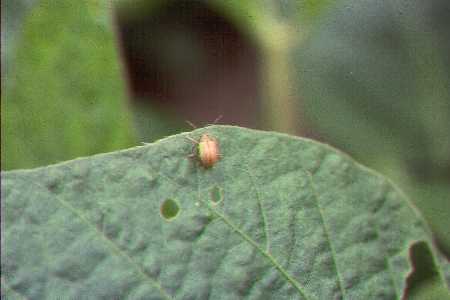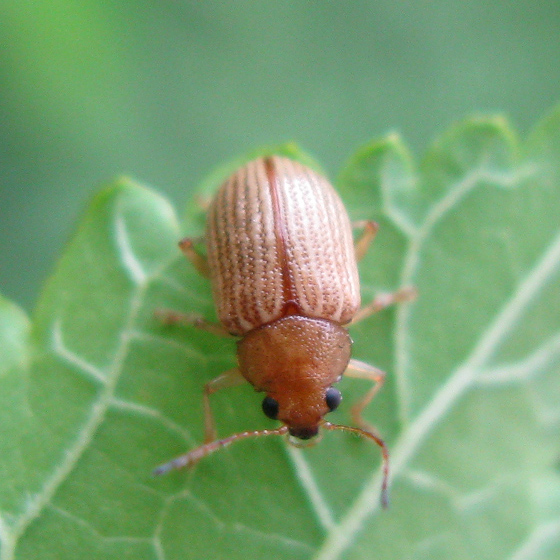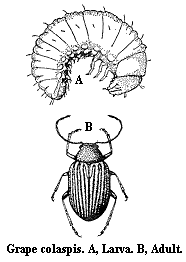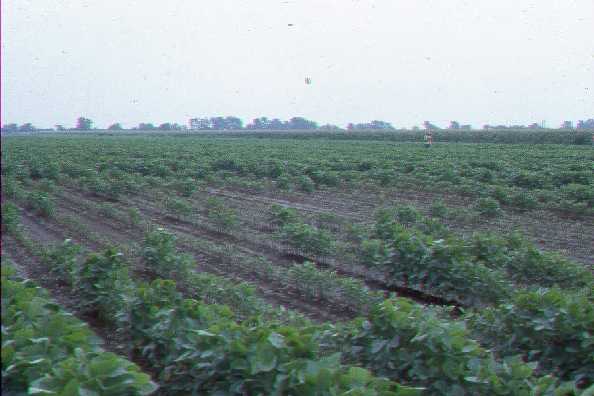Grape Colaspis
go.ncsu.edu/readext?202027
en Español / em Português
El inglés es el idioma de control de esta página. En la medida en que haya algún conflicto entre la traducción al inglés y la traducción, el inglés prevalece.
Al hacer clic en el enlace de traducción se activa un servicio de traducción gratuito para convertir la página al español. Al igual que con cualquier traducción por Internet, la conversión no es sensible al contexto y puede que no traduzca el texto en su significado original. NC State Extension no garantiza la exactitud del texto traducido. Por favor, tenga en cuenta que algunas aplicaciones y/o servicios pueden no funcionar como se espera cuando se traducen.
Português
Inglês é o idioma de controle desta página. Na medida que haja algum conflito entre o texto original em Inglês e a tradução, o Inglês prevalece.
Ao clicar no link de tradução, um serviço gratuito de tradução será ativado para converter a página para o Português. Como em qualquer tradução pela internet, a conversão não é sensivel ao contexto e pode não ocorrer a tradução para o significado orginal. O serviço de Extensão da Carolina do Norte (NC State Extension) não garante a exatidão do texto traduzido. Por favor, observe que algumas funções ou serviços podem não funcionar como esperado após a tradução.
English
English is the controlling language of this page. To the extent there is any conflict between the English text and the translation, English controls.
Clicking on the translation link activates a free translation service to convert the page to Spanish. As with any Internet translation, the conversion is not context-sensitive and may not translate the text to its original meaning. NC State Extension does not guarantee the accuracy of the translated text. Please note that some applications and/or services may not function as expected when translated.
Collapse ▲Grape colaspis – Colaspis brunnea (Fabricius)
Family: Chrysomelidae, Order: Coleoptera
Adult – The oval, yellowish-brown beetle is 4 to 5 mm long. The wing covers appear striped due to the presence of longitudinal rows of shallow indentations.
Egg – The smooth, white to yellow egg is about 0.6 by 0.25 mm.
Larva – Measuring up to 7 mm long, the grayish-white or tan larva has a dark brown head and prothoracic shield. It is stout and grub-like in form with three pairs of legs near its head and fleshy appendages on the abdominal segments.
Pupa – Whitish at first, the 4 mm-long pupa gradually darkens.
Recommendations: Grape colaspis passes the winter in the soil as a grub (larva) from the previous season. Typically, the adults will only lay eggs in legume plantings (e.g. soybean) during the previous season and, therefore, if current year soybean seedlings are to have a problem, they must follow last year’s soybean crop. Rotation eliminates grape colaspis problems. After overwintering below the plow layer, grape colaspis grubs move near the surface in later May and feed on seedling roots. The grubs are small (to 5/16 inch), “C” shaped, white larvae with a brown head capsule and neck shield. Damaged seedlings have few lateral roots and the underground stem may show feeding on the bark. Seedlings may die or be stunted from the feeding. This insect will almost always be restricted to spots in the field and is most abundant on organic soils. Grape colaspis damage is often wrongly interpreted as nematode damage, however, it can be identified by the characteristic root and stem feeding signs. Often the presence of small, light brown adult beetles (less than 1/4 inch) feeding in the plant terminals will aid problem identification. There is no remedial treatment. Replanted soybeans are seldom attacked since the larva responsible for the original injury will have transformed into beetles and emerged. Foliage feeding by the emerged adults is insignificant.






